In today’s digital world, a printer might seem less essential than it once was, but for documents, photos, and physical records, it remains an indispensable tool. Whether you’re a student, a home-based professional, or managing a bustling office, selecting the right printer can significantly impact your productivity and budget.
At Electronics Place, we understand that “one size fits all” doesn’t apply to printers. Here’s a guide to help you navigate the options and choose the perfect printer for your needs.
1. Identify Your Primary Use Case & Print Volume
Before anything else, consider what and how much you’ll be printing:
- Home Use (Light to Moderate Printing):
- Typical Needs: School assignments, occasional photos, boarding passes, recipes, general documents.
- Volume: Low (e.g., 20-200 pages per month).
- Considerations: Compact size, ease of use, cost of ink/toner, wireless connectivity.
- Home Office / Small Business (Moderate to High Printing):
- Typical Needs: Text documents, reports, invoices, presentations, some color graphics.
- Volume: Moderate to high (e.g., 200-1,000+ pages per month).
- Considerations: Speed, cost per page, reliability, scanning/copying/faxing capabilities, network connectivity.
- Professional/Creative Use:
- Typical Needs: High-quality photos, marketing materials, detailed graphics, large format prints.
- Volume: Varies, but quality is paramount.
- Considerations: High print resolution (DPI), color accuracy, special media handling, advanced ink systems.
2. Inkjet vs. Laser: The Core Decision
This is often the first and most critical choice:
- Inkjet Printers:
- How they work: Spray tiny droplets of liquid ink onto paper.
- Pros: Generally lower upfront cost, excellent for color photos and graphics, versatile with different paper types (glossy, textured), often more compact. Many modern inkjets use EcoTank (or ink tank) systems with refillable reservoirs, offering significantly lower cost per page than traditional cartridges.
- Cons: Slower for high-volume text printing, ink can dry out if not used regularly, individual cartridges can be costly if not using an ink tank system.
- Best for: Home users, students, those needing high-quality color prints and photos, and those who don’t print extremely high volumes of text. Ink tank models are excellent for those seeking low running costs for varied printing.
- Laser Printers:
- How they work: Use a laser and toner (fine powder) to fuse images onto paper.
- Pros: Much faster for text documents, produce crisp, sharp text, toner cartridges last much longer than ink cartridges (leading to a lower cost per page for high volumes), ideal for large print jobs, and rarely experience clogs. Available in monochrome (black and white) or color.
- Cons: Higher upfront cost, generally larger and heavier, less suitable for high-quality photo printing, and can’t print on heat-sensitive materials.
- Best for: Offices, small businesses, and home users who print high volumes of text-based documents and prioritize speed and low per-page costs.
3. All-in-One (Multifunction) Printers vs. Print-Only
- All-in-One (AIO) / Multifunction Printers (MFPs): These devices combine printing, scanning, and copying capabilities (some also include faxing) into a single unit.
- Pros: Space-saving, cost-effective (one device instead of three), convenient for home offices.
- Cons: If one function breaks, you might lose them all.
- Best for: Most home and small office users who need more than just printing.
- Print-Only Printers: Dedicated solely to printing.
- Pros: Often faster and more robust for their specific task, potentially better print quality for their given type (e.g., dedicated photo printers), smaller footprint for basic models.
- Cons: No scanning or copying functionality.
- Best for: Users with very specific, high-volume printing needs or those who already have separate scanning equipment.
4. Key Features to Consider
- Connectivity:
- USB: Standard for direct computer connection.
- Wi-Fi / Wi-Fi Direct: Essential for wireless printing from laptops, smartphones, and tablets. Wi-Fi Direct allows direct connection without a router.
- Ethernet: For connecting to a wired network, common in office environments.
- Mobile Printing Apps: Allow easy printing from your smartphone or cloud services.
- Print Speed (PPM – Pages Per Minute): Higher PPM is crucial for high-volume printing, particularly for offices.
- Print Quality (DPI – Dots Per Inch): Higher DPI means finer detail and sharper images. 600 DPI is good for text, 1200 DPI or higher for photos.
- Duplex Printing: Automatic double-sided printing saves paper and time.
- Paper Handling: Check paper tray capacity and supported paper sizes (A4, A3, photo paper, envelopes). An Automatic Document Feeder (ADF) is a time-saver for scanning/copying multiple pages.
- Cost of Consumables: Always check the price and page yield of replacement ink cartridges or toner before buying the printer itself. Ink tank systems offer excellent long-term savings.
Find Your Ideal Printer at Electronics Place
With a vast selection of inkjet, laser, and all-in-one printers from trusted brands like HP, Epson, Canon, and Brother, Electronics Place is your go-to destination. Our knowledgeable team is ready to help you evaluate your printing needs and guide you to the perfect solution that combines performance, efficiency, and value.
Equip your home or office with the right printing power. Explore our range of printers at Electronics Place (electronicsplace.co.ke) today. We deliver convenience and quality to all cities in Kenya.


 No products in the cart.
No products in the cart.